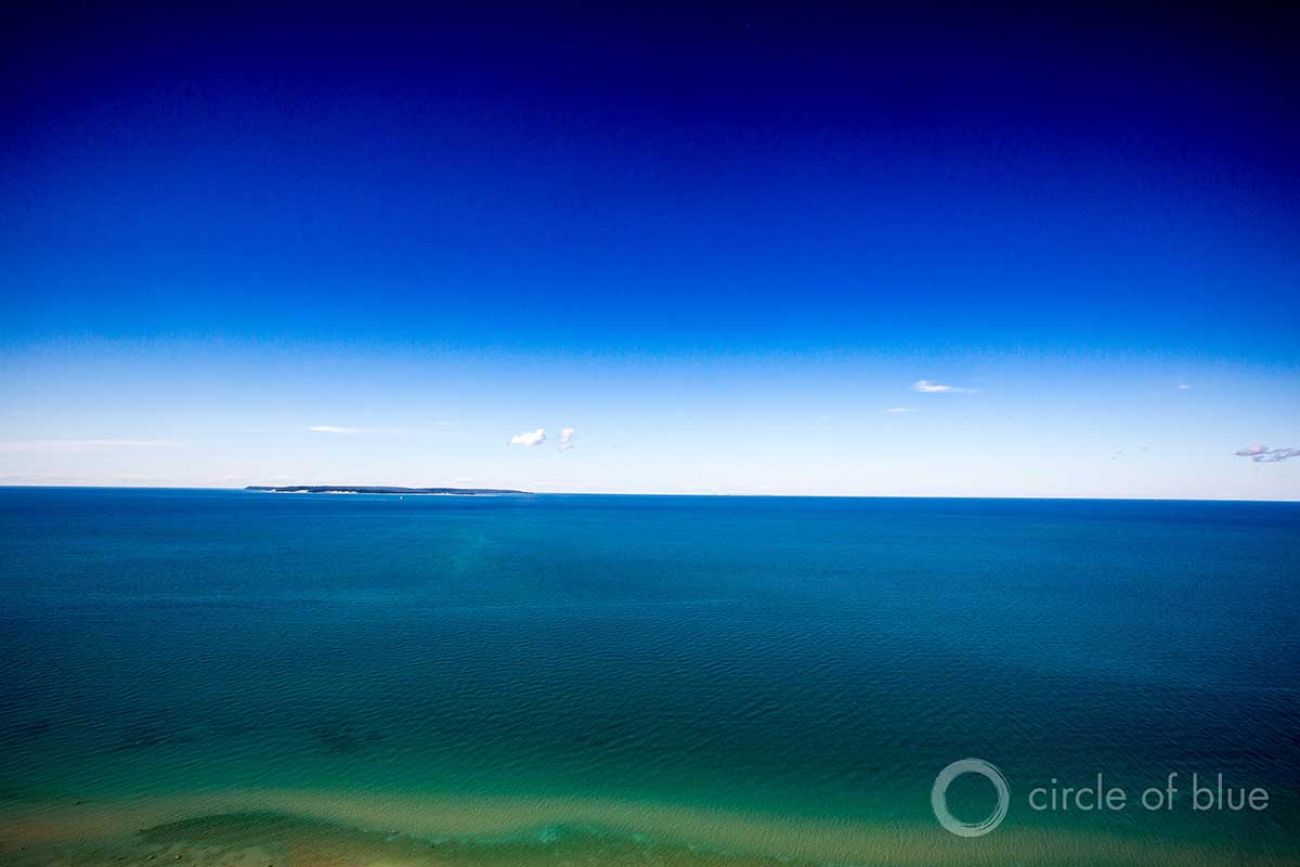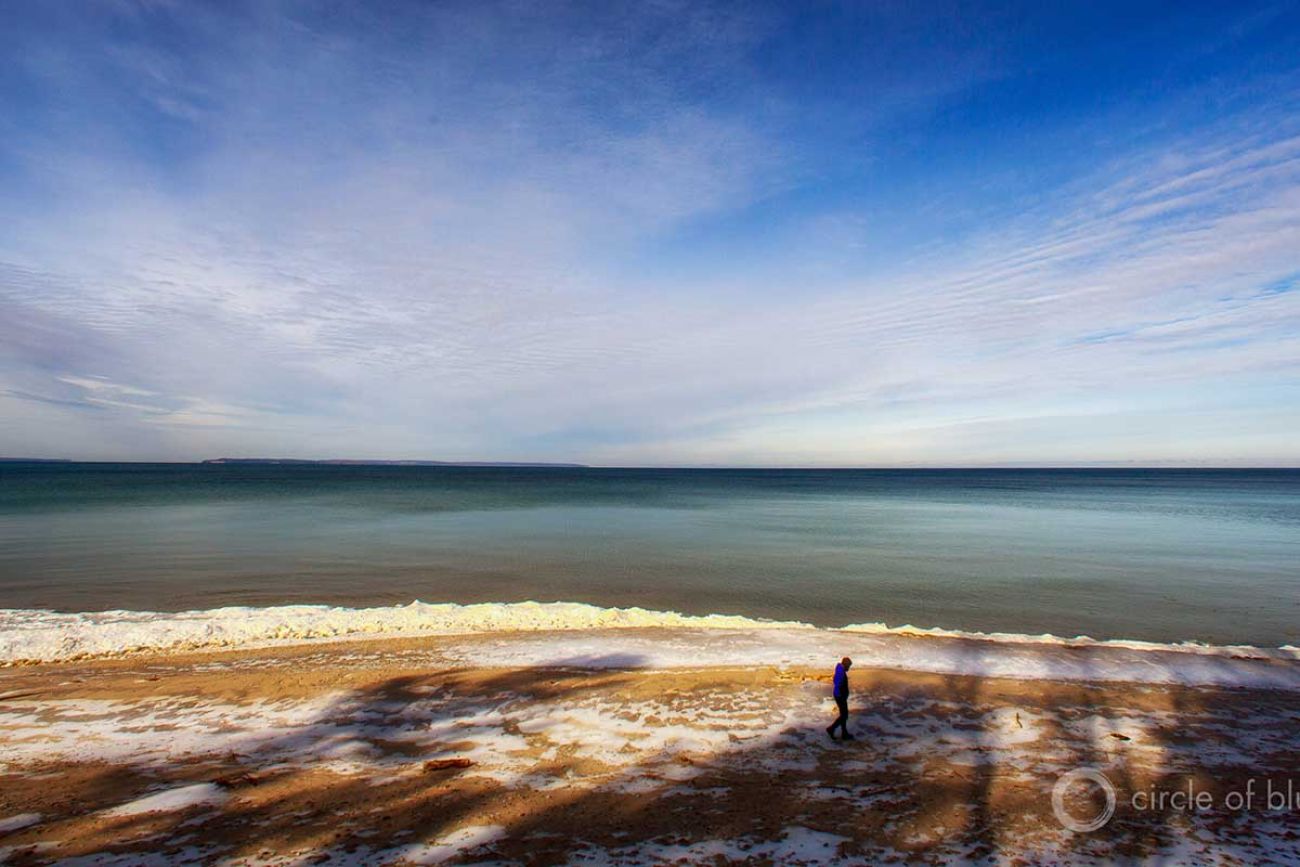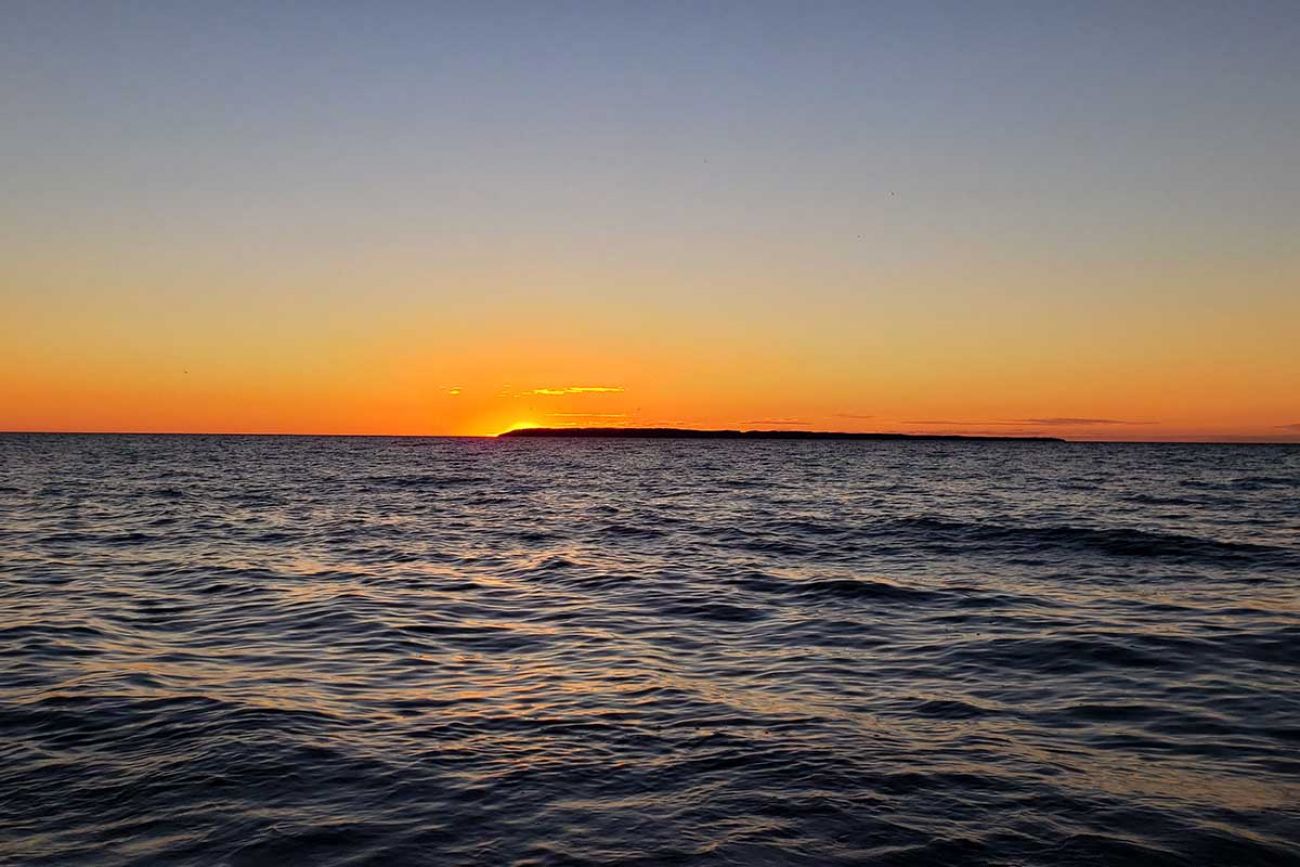Water wars: Should Michigan worry about water diverted from Great Lakes?

When Monica Evans gets together with her friends they talk economics, politics, the weather. They also discuss a subject that arises periodically in the news — the prospect that Great Lakes water could be diverted to other parts of the country.
Ready or not — the Great Lakes as a climate refuge
The Great Lakes region is frequently touted as one of the most climate-resilient places in the U.S., in no small part because of its enviable water resources. But climate change threatens water quality, availability, and aging water infrastructure by exposing existing vulnerabilities and creating new ones. In this series, members of the Great Lakes News Collaborative explore what it may take to prepare the Great Lakes region for the future climatologists say we can expect.
Funded by the Charles Stewart Mott Foundation, the collaborative’s four nonprofit newsrooms — Bridge Michigan, Circle of Blue, Great Lakes Now at DPTV and Michigan Radio — aim to elevate discussion, amplify the voice of Michigan residents and produce action that protects the region’s waters for future generations. While Mott provides financial support, our public service journalism is produced independently.
Evans, an environmental activist in the Traverse City region, has long worried that water could become in the 21st century what oil was in the 20th. As the global climate warms and water scarcity mounts, Great Lakes water is more valuable than ever.
That point was made clear on Feb. 5 when the Village of Somers in Kenosha County, Wis., applied to Wisconsin’s Department of Natural Resources to divert water from Lake Michigan. The community wants 1.2 million gallons a day, and up to 2 million gallons of water daily in high stress events, in anticipation of future population growth. The application will only need state approval, according to the DNR, since the amount of water is below 5 million gallons per day. Anything more than that would need all states within the Great Lakes Basin plus the Canadian provinces Ontario and Quebec to weigh in.
Related:
- Can Michigan become a climate haven? Duluth is already planning.
- Michigan’s climate-ready future: wetland parks, less cement, roomy shores
- Scientists find more complexity in microplastics polluting the Great Lakes
- A big fight in Lansing over fishing rules on the Great Lakes
- Report: Lake Michigan is ‘running a fever.’ More storms, less fish possible.
Lake Michigan holds 1.3 quadrillion gallons of water. So the village’s ask is a pittance. But the issue that rankles Evans is that, if approved, the Somers application is the fourth Great Lakes water diversion proposal in the past thirteen years.

It’s All In The Compact
Since diversions first gained traction in the early 1980s, when a coal company attempted to divert Great Lakes water to Wyoming, interest in the Great Lakes Basin’s water has grown from a trickle to a gush. Straddling communities — areas like the Village of Somers that sit just outside the Great Lakes basin boundary — are the most likely candidates for diversion permits.
The Great Lakes Compact — signed into law in 2008 by President George W. Bush — largely prohibits taking large quantities of water from the Great Lakes and the basin’s groundwater, smaller lakes and rivers without the approval of all eight states and the input of Ontario and Quebec, which are both in the watershed.
But a few limited exceptions exist. “Excepted from the diversion rule is the Chicago diversion, which takes 2 billion gallons from the lake each day, humanitarian usage, and water use in products like manufacturing and agriculture,” said Jim Olson, an environmental lawyer in Traverse City and founder of the environmental policy organization FLOW. “The product provision is the biggest loophole, which allows containers carrying less than 5.7 gallons from the basin.”
The “water bottle” loophole, as it’s come to be called, was at the center of the Nestle permit at the Ice Mountain facility in Mecosta County, Michigan. Between 2005 and 2015, the company withdrew 3.4 billion gallons of groundwater from the state in bottled water. Most of the product is sold within the Great Lakes states, according to Nestle, with 10 percent shipped and sold outside the basin.
Other companies, such as the Pfizer pharmaceutical manufacturing plant near Kalamazoo, draw out billions of gallons of water a year in products.
Olson, who has been working with the compact for years, sees a threat in the loophole.
“So just imagine,” he said. “You could basically truck water in containers with a total of 10,000 gallons sitting in the back, stamp the word product on it, and ship it to Louisville to a bottled water plant. You can use the water for anything you want as long as a consumer buys it.”
Other exceptions include communities located partially in the Great Lakes basin or a community located within a county partially in the Great Lakes basin. Any of these diversions must be approved by all eight states and input from the two Canadian provinces, with each state able to veto a diversion application.
What’s next?
Diversions have been approved in New Berlin and Waukesha, WI, whose counties lie partially in the Great Lakes basin, and for the Foxconn Technology Group in Racine, WI, which diverts up to 7 million gallons a day from Lake Michigan. The Foxconn approval was met with criticism from environmental groups who argued the diversion violated the terms of the compact because it wasn’t for “public water supply purposes.”

In effect, said Evans and other diversion opponents, impediments to diverting Great Lakes water that were established in an eight-state compact 13 years ago are steadily being breached.
“On one hand it’s terrible, because I know the climate will make the world’s clean water problem even worse. You can’t deny that,” said Evans. “But where do you draw the line and who gets to decide what happens?”
“You see (diversion proposals) crop up one at a time,” said James Clift, deputy director of the Michigan Department of Environment, Great Lakes, and Energy. “We usually see them in Wisconsin because the line of the basin is closest to the lake itself. Some of it is growth within the community and they have limited places to get water. Other times, it’s commercial or residential growth in areas that were formerly agriculture.”
In all these cases, communities are required to return all water back to the Great Lakes that isn’t used. Clift said he is not that concerned.
“The farther these (diversion requests) are away from the lakes, the more unrealistic it is,” says Clift. “You’d never see Great Lakes water being taken over the Rocky Mountains. Anything over the Rocky Mountains, we’re safe.”
But on this side of the Rockies, there has also been some talk for a while about the communities around the Ogallala Aquifer. Beneath the Great Plains and stretched from the southern end of South Dakota to the northwestern corner of Texas, the Ogallala Aquifer is declining rapidly. Recoverable water has dropped 9 percent overall since extensive groundwater pumping began, and the future does not look good.
“I think the major trip (for Great Lakes water) in the next 50 years is the lowering of the Ogallala Aquifer and the impact that is going to have on farm commodities and food supply,” says Dave Dempsey, a Great Lakes policy expert and author of “Great Lakes for Sale.”
“The transferring of Great Lakes water that distance is more economically viable,” he said.
The Ogallala Aquifer produces almost one-fifth of the corn, wheat, cotton and cattle in the United States today.
In theory, it’s possible those areas in the Great Plains could make a play for Great Lakes water at some point, according to Clift. But for that to happen, the communities would have to change the federal law and amend the compact before applying for a diversion.
“That pressure could build over time,” Clift said. “Which is why it’s important to start recognizing the limitations of water and where we expect water to be in the future.”
While long-distance water diversions seem like a far off scenario, it’s not all conjecture. In Oregon, a company is actively planning to train water across the country to regions where water supplies are low. Whether this could eventually mean the Great Lakes is unclear, but it’s evident that bulk water transport may be a more serious consideration.
The future of water diversions largely depends on the severity of climate change and what that will look like across the country, said Dempsey. Desalination plants, which remove salts, have increased in the Southwest United States and across the world, but while the prices for converting salt water to fresh water have dropped, the process is expensive and comes with its own set of environmental issues such as brine disposal.
There is also the possibility of mass migration to the Great Lakes. People may come to the basin, a place that experts say will be the least affected by climate change, and use the water here instead of diverting it. But Dempsey says both could happen, too.
“The question for me is not if the compact will change, but how long it’s going to take,” Dempsey said. “It may take 10, 20, or 100 years. But severe drought in the Southwest will increase pressure at the federal level and they’ll have to decide the most economically viable solution.”
Michigan Environment Watch
Michigan Environment Watch examines how public policy, industry, and other factors interact with the state’s trove of natural resources.
- See full coverage
- Subscribe
- Share tips and questions with Bridge environment reporter Kelly House
Michigan Environment Watch is made possible by generous financial support from:
Our generous Environment Watch underwriters encourage Bridge Michigan readers to also support civic journalism by becoming Bridge members. Please consider joining today.
See what new members are saying about why they donated to Bridge Michigan:
- “In order for this information to be accurate and unbiased it must be underwritten by its readers, not by special interests.” - Larry S.
- “Not many other media sources report on the topics Bridge does.” - Susan B.
- “Your journalism is outstanding and rare these days.” - Mark S.
If you want to ensure the future of nonpartisan, nonprofit Michigan journalism, please become a member today. You, too, will be asked why you donated and maybe we'll feature your quote next time!






